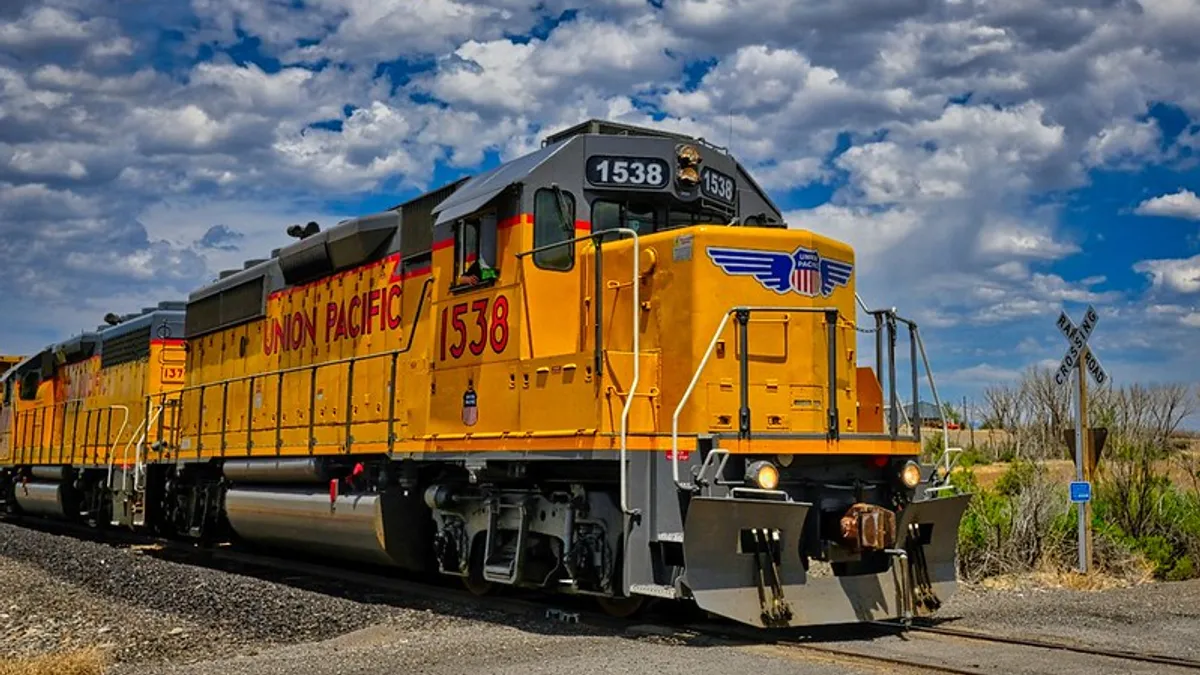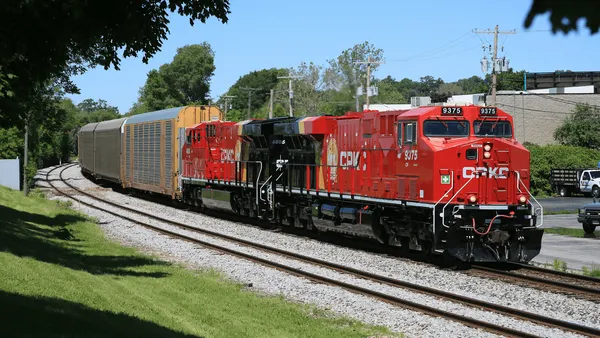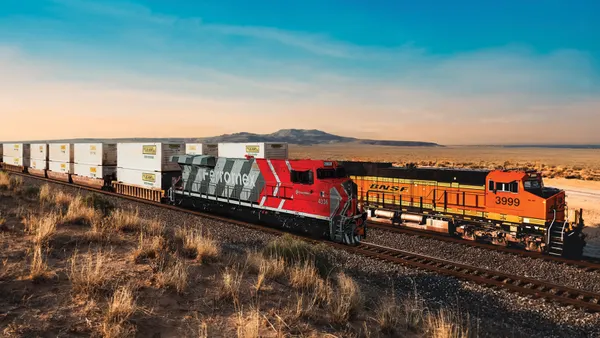Union Pacific is reporting improved service after months of congestion created lengthy delays and exacerbated supply constraints of essential goods.
Train velocity has improved 8% since mid-April, the railroad said in an Aug. 26 filing to the Surface Transportation Board. The number of trains held for crew shortages declined from an average of 51 per day in mid-April to 16 per day for the week ending Aug. 19, the lowest number so far this year.
Union Pacific added 3,000 of its own cars back into service to support demand, the railroad said in a customer letter earlier this month. It’s also making concerted efforts to maximize train lengths and improve crew utilization.
“We are making steady progress on our service recovery,” Kenny Rocker, executive vice president of marketing and sales at Union Pacific, wrote in the letter.
Freight railroads have been backed up for months due to a mix of labor constraints and high demand. Shippers and railroad workers alike have contended that years of operating cuts exacerbated congestion after the pandemic hit.
To boost network fluidity, Union Pacific pursued aggressive measures to limit the number of private-owned cars on its tracks, a move some shippers say only worsened delays of certain essential goods such as fertilizer and other commodities. The railroad is still asking that shippers avoid “inserting excess rail cars on our network” to build on positive service momentum, Rocker said in the letter.
“By eliminating excess rail car inventory along with other resource initiatives, we gain the ability to improve service for all our customers,” he said.
Union Pacific reported that it’s also made progress on addressing labor constraints and is on track to hire and train 1,400 train, engine and yard employees by the end of the year. Workforce availability surpassed 84% for the first time since May, the railroad told the STB.
Union Pacific expects to make more headway on easing congestion over the Labor Day holiday, when carload volumes and operating inventory are typically lower.
“Labor Day will provide the network with an opportunity for a small reset, and we anticipate that this reset will also serve as a tailwind for improvement of our key metrics moving forward,” the railroad wrote to the STB.
Editor's note: This story was first published in our Logistics Weekly newsletter. Sign up here.















